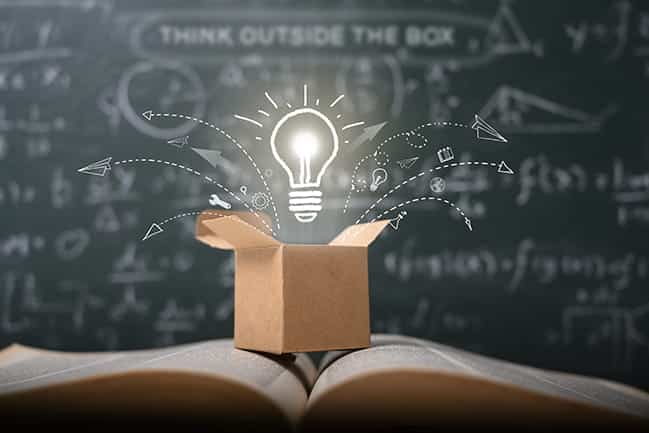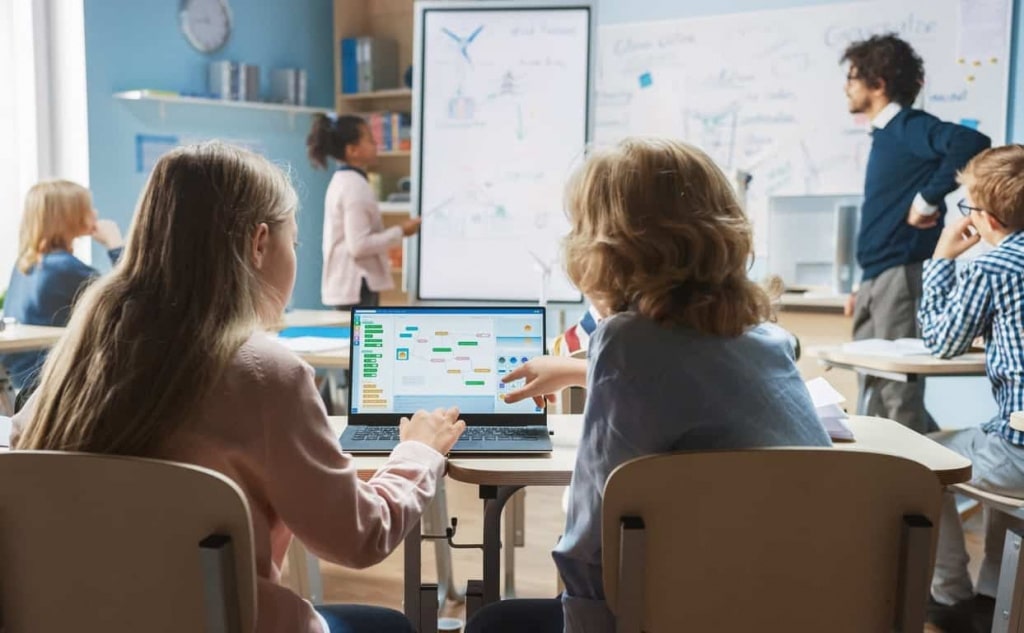Anúncios
Education innovation is constantly progressing, and 2024 promises to be a year of great change. New technologies, approaches and practices are being developed to improve student learning and prepare young people for the future.
In 2024, education will be more personalized, engaging and accessible than ever before. Students will have more options for learning, and teachers will have more tools to help them teach.
Anúncios
Technology is playing a key role in education innovation. Artificial intelligence (AI), virtual reality (VR) and augmented reality (AR) are being used to create more engaging and meaningful learning experiences in education innovation.
Education is becoming more personalized, engaging and accessible than ever before. New technologies are playing a key role in this transformation, but it’s also important not to forget the role of teachers.
Anúncios
Teachers are still primarily responsible for teaching and inspiring students, and they need to be equipped with the necessary tools and training to succeed.
Now, let’s find out about the 5 main trends in education innovation in 2024:
Education innovation has the potential to transform education and prepare young people for the future. With new technologies, approaches and practices, students can learn more effectively and develop the skills and knowledge they need to succeed.
1. data-based education
Data-driven education is an approach that uses data to improve learning and education. Data can be used to track student progress, identify areas of need and personalize learning.
A recent study by the NGO Education Next: https://www.educationnext.org/ found that 80% of school districts in the United States are using some form of data to improve learning.
Data-driven education offers a number of benefits, including:
Better understanding of student learning: Data can help teachers better understand how students are learning. This can help them adapt teaching to the individual needs of each student.
Early identification of problems: Data can help teachers identify students who are struggling in a particular area. This can enable teachers to provide additional support to students before they fall behind.
Personalizing learning: Data can be used to personalize learning for each student. This can help students learn more effectively and efficiently.
There are several examples of data-driven education. One example is the use of adaptive learning software. This software uses data to provide students with content and activities that are suitable for their skill level and interests.
Another example is the use of learning management systems (LMS). These systems collect data on student performance, use of resources and participation. This data can be used to improve teaching and learning.
Data-driven education innovation has the potential to transform education. It can help students learn more effectively and efficiently, and it can help them develop the skills and knowledge they need to succeed in the future.
2. Personalized education
Personalized education innovation is an approach that focuses on the individual needs of each student, providing them with content and activities that are relevant to their interests and abilities. This approach is becoming increasingly popular in the United States as educators recognize its potential to improve student learning.
Here are some specific examples of how personalized education innovation is being used:
The New York City Personalized Learning School (NYCPL) is a public school that uses a personalized learning approach for all students. The school uses data on student performance to develop personalized study plans.
Khan Academy is a non-profit organization that offers free online courses. Khan Academy offers personalized courses for students of all skill levels.
Pearson is an education company that offers a variety of personalized education products and services. Pearson offers adaptive learning software, personalized study plans and other tools to help educators personalize learning for their students.
Personalized education is a promising educational innovation with the potential to improve student learning.
3. Immersive education
Immersive technologies such as virtual reality (VR) and augmented reality (AR) are increasingly being used in education. These technologies can create more engaging and meaningful learning experiences.
Virtual reality (VR) creates a virtual environment that the user can explore. This can be used to provide students with first-hand field experience at a place or event that they cannot visit in person. For example, students can use VR to visit a museum, a historical site or even a distant planet.
Augmented reality (AR) adds virtual elements to the real world. This can be used to provide students with additional information about the world around them. For example, students can use AR to see the human skeleton inside their body or to visualize how an atom behaves.
Immersive education innovation is becoming increasingly popular in the United States. As immersive technologies continue to develop, immersive education is likely to become even more accessible and effective.
4. Social education
Social education innovation is an approach that focuses on collaboration between students. This approach can help students learn from each other and develop important social skills.
In the United States, there are several examples of social education innovation. One example is the use of group projects. Students work together to complete a project, such as creating a website or developing a product.
Another example is the use of learning games. Learning games are designed to promote collaboration between students.
Social education is becoming increasingly popular in the United States. As the importance of social skills grows, social education is likely to become even more common.
Social education innovation has the potential to transform education. It can help students learn more effectively and efficiently, and it can help them develop the skills and knowledge they need to succeed in the future.
5. Environmental education
Environmental education innovation is an approach that focuses on teaching students about environmental problems and how to address them. This approach is becoming increasingly important as the world faces the challenges of climate change and sustainability.
Environmental education innovation offers a number of benefits, including:
Environmental awareness: Environmental education can help students understand environmental problems and their importance.
Problem-solving skills: Environmental education can help students develop the skills needed to solve environmental problems.
Positive attitudes towards the environment: Environmental education can help students develop positive attitudes towards the environment.
In the United States, there are several examples of environmental education. One example is the use of environmental education curricula. These curricula are designed to teach students about environmental problems and how to address them.
Another example is the use of extracurricular environmental education programs. These programs can offer students opportunities to learn about the environment outside the classroom.
Environmental education is becoming increasingly important in the United States. As environmental problems become more serious, environmental education is likely to become even more common.
Environmental education innovation has the potential to transform education. It can help create a generation of citizens who are more aware of and committed to the environment.
These trends in educational innovation have the potential to transform education. They can help students learn more effectively and efficiently, and they can help them develop the skills and knowledge they need to succeed in the future.
However, it is important to note that educational innovation is not an easy process. It requires time, effort and resources. Educators need to be willing to learn new technologies and approaches, and schools need to have the necessary resources to support innovation.
See More: 6 WAYS TO UPGRADE YOUR CAREER







